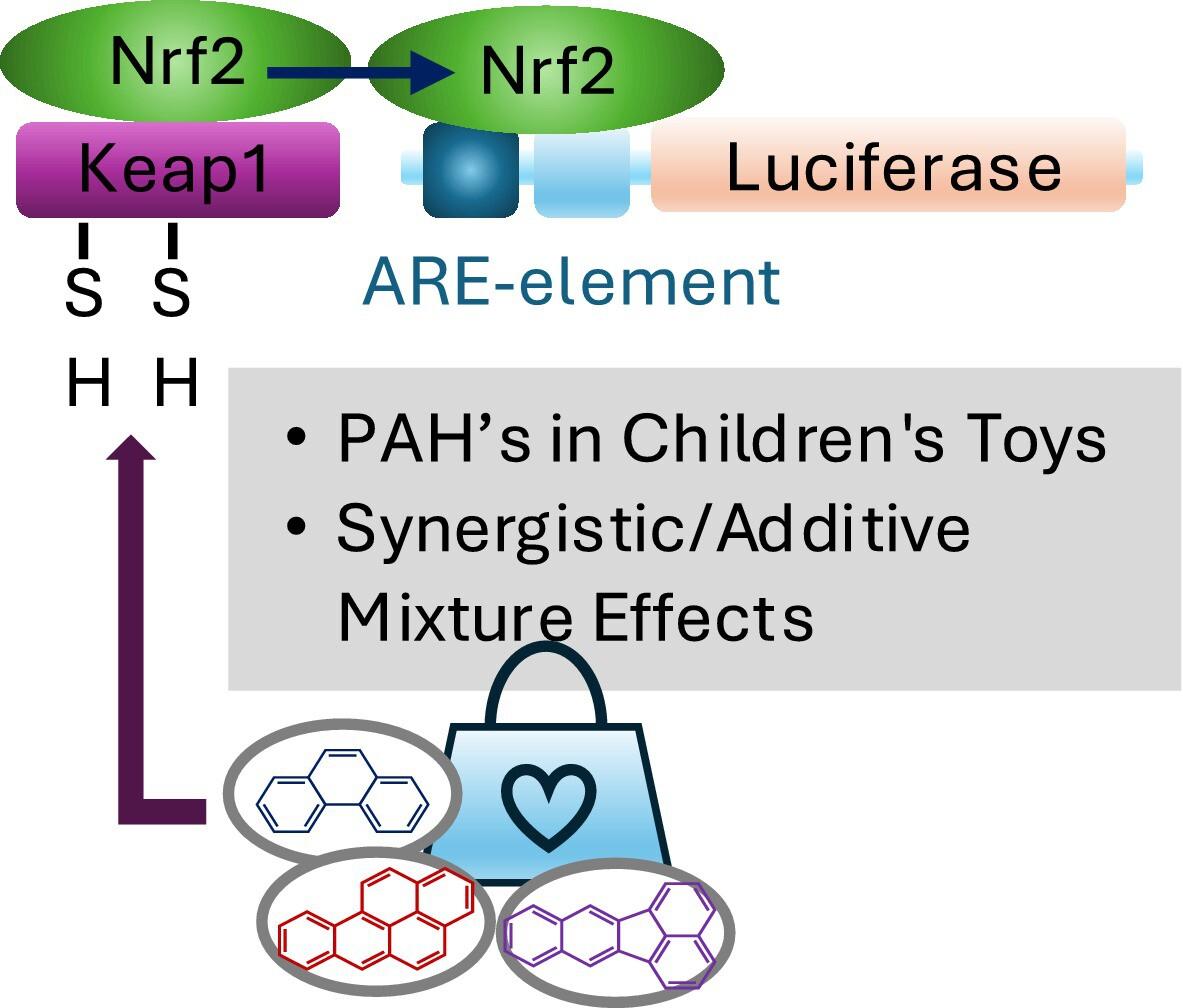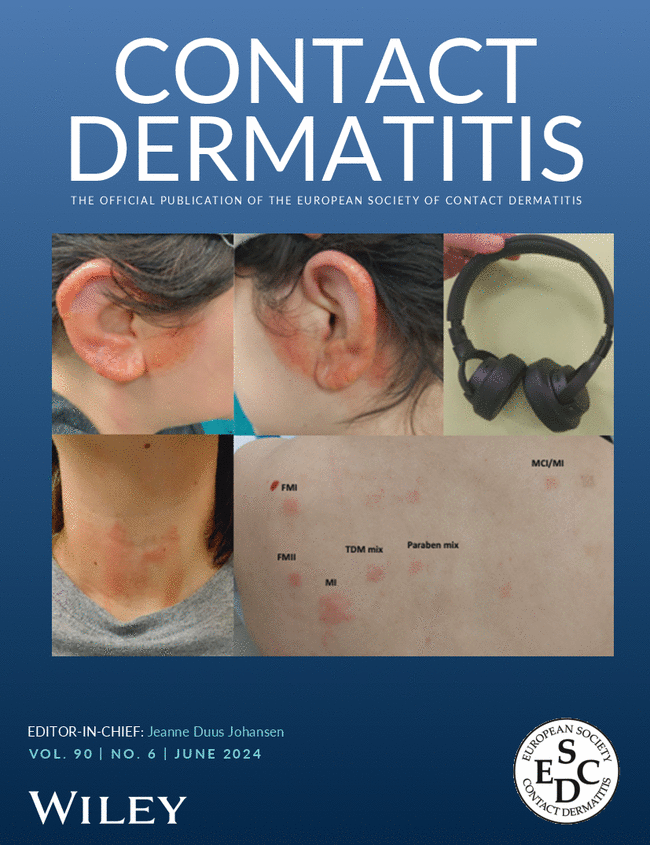Exploring the Activation of the Keap1-Nrf2-ARE Pathway by PAHs in Children's Toys
Abstract
Background
Children are particularly susceptible to environmental pollutants. This study assessed the skin sensitisation risk associated with polycyclic aromatic hydrocarbons (PAHs), prevalent in toys.
Objectives
To evaluate the skin sensitisation potential of PAHs using the KeratinoSens assay.
Methods
Individual PAHs (acenaphthylene, anthracene, benzo[a]anthracene, benzo[a]pyrene (B[a]P), benzo[b]fluoranthene (B[b]F), benzo[e]pyrene, benzo[g,h,i]perylene, benzo[k]fluoranthene (B[k]F), chrysene, fluoranthene, fluorene, naphthalene, phenanthrene, pyrene and triphenylene) and ternary mixtures containing B[a]P were assessed for their ability to activate the Keap1-Nrf2-ARE pathway in human keratinocytes. The concentration addition model and additive index were used to predict and analyse mixture effects.
Results
Among the individual PAHs, B[k]F demonstrated the most potent activation of the pathway, exhibiting a 34-fold higher potency relative to B[a]P. B[b]F, chrysene and B[a]P also exhibited significant activation, while the remaining PAHs displayed negligible or weak activation. Notably, PAH mixtures exhibited synergistic effects, except for those composed solely of potent sensitizers.
Conclusions
This study provides the first assessment of the skin sensitization potential of these PAHs. The findings suggest that B[k]F, B[b]F and chrysene may pose a higher risk of skin sensitisation than previously thought. Additionally, the synergistic effects observed in mixtures highlight the importance of considering combined exposures when assessing PAH exposure risk.


 求助内容:
求助内容: 应助结果提醒方式:
应助结果提醒方式:


